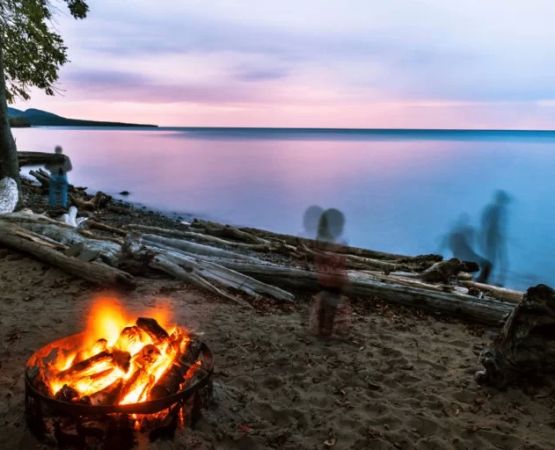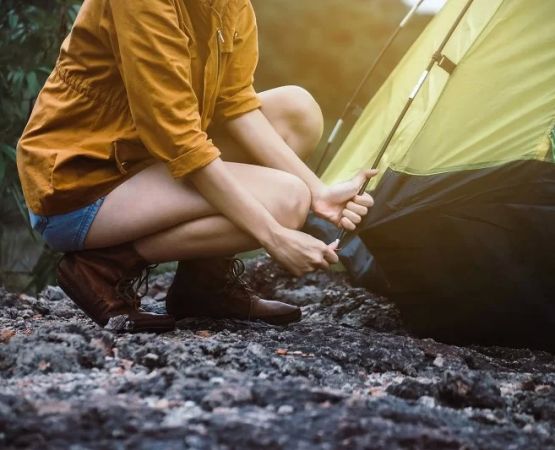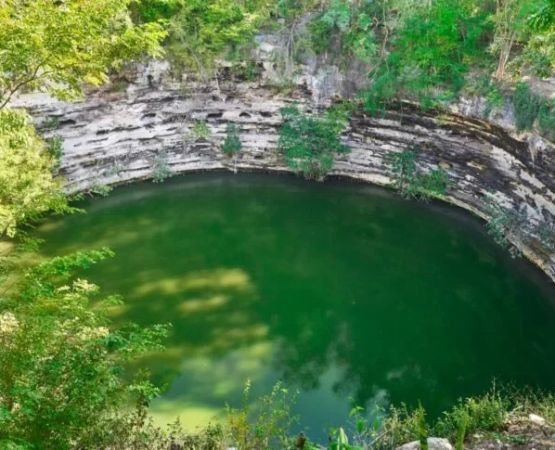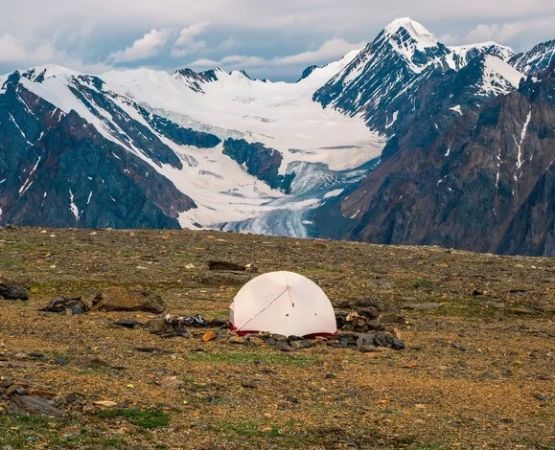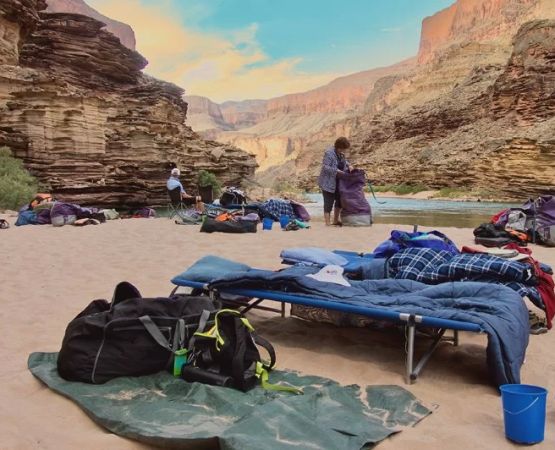- #Understanding-steppe-like-terrains-and-their-unique-challenges
- #Preparing-your-gear-and-mindset-for-steppe-camping
- #How-to-choose-a-safe-and-stable-campsite-in-open-grasslands
- #Weather-wildlife-and-environmental-risks-in-steppe-camping
- #Real-stories-and-cases-from-campers-in-steppe-environments
- #Maintaining-comfort-safety-and-sustainability-in-steppe-like-terrains
1. Understanding Steppe-Like Terrains and Their Unique Challenges
When learning how to camp in steppe-like terrains, the first step is understanding the environment itself. Steppes are vast, semi-arid grasslands, often stretching miles without trees, hills, or natural windbreaks. While they may look simple on the surface, these open landscapes have their own personality—one that demands respect and preparation from any camper.
In the American West, some of the plains resemble steppes in their dryness, their endless skies, and their striking lack of shade. The land may appear calm, but the climate can shift rapidly, with winds that sweep across the plains and temperatures that swing dramatically between day and night. This makes preparation more important here than in many forested camping areas.
For beginners, the open beauty of steppe-like terrains can feel almost overwhelming, but with proper planning, many campers find these areas to be some of the most peaceful and restorative places to explore. And when you need gear that actually performs in these exposed conditions, the team at Pine Cliff Resort can help you find options suited for long stretches of open ground.
2. Preparing Your Gear and Mindset for Steppe Camping
2.1 Lightweight But Wind-Resistant Shelter Setup
Campers often underestimate the wind in steppe-like terrains. A lightweight tent is helpful for travel, but it must also be able to withstand strong gusts. Sturdy stakes, guy lines, and a tent designed with aerodynamic stability are essential. Many seasoned campers also pack extra ground anchors because the soil in steppes is often dry, loose, and difficult to secure.
2.2 Sun Protection Is Not Optional
With few trees or natural shade, sun exposure is constant. Wide-brim hats, lightweight long sleeves, and reflective tarps help reduce heat and prevent sunburn. A portable shade structure can dramatically improve comfort—especially during long midday stretches.
2.3 Water Management and Hydration
Unlike mountain or forest environments, steppe-like terrains often lack natural water sources. Carrying extra water is not just recommended—it’s mandatory. Campers should factor in additional liters for cooking, cleaning, and unexpected delays.
2.4 Mental Readiness for Open Spaces
The psychological effect of camping in a wide-open plain is something many people don’t expect. With no trees or large features in sight, some campers reported feeling unusually exposed. Taking time to adapt to the openness can help you settle in and enjoy the experience rather than feeling unsettled by the horizon stretching endlessly around you.
3. How to Choose a Safe and Stable Campsite in Open Grasslands
3.1 Look for Natural Depressions—But Not Too Deep
Small dips or shallow natural bowls in the terrain can offer some wind protection. However, avoid any low areas where water could pool during sudden storms. In semi-arid environments, the ground may not absorb water quickly, and flash flooding can occur even if rain happens miles away.
3.2 Study the Wind Direction Before Setting Up
Understanding how to camp in steppe-like terrains means mastering the wind. Set up your tent so that its least resistant side faces the prevailing wind. This reduces strain on the tent poles and helps prevent catastrophic failures during nighttime gusts.
3.3 Avoid Tall Grass Patches
Though tall grass might look cozy, it can attract insects, hide holes, and present a fire risk. Aim for areas with shorter, even vegetation where you can clearly see the ground.
3.4 Watch for Wildlife Trails
Animals in steppe regions create subtle trails across the land. Avoid setting up camp on these paths, as nighttime wildlife traffic can be surprising and potentially dangerous.
4. Weather, Wildlife, and Environmental Risks in Steppe Camping
4.1 Sudden Temperature Shifts
Daytime heat in steppe-like terrains can quickly turn into chilly nights. Layered clothing becomes your best friend—something lightweight for the sun, and insulated gear for after dark.
4.2 Lightning Risks During Open-Sky Storms
In open plains, you may be the tallest object for miles. If storms approach, move to lower ground immediately and avoid standing near metallic gear. Lightning is one of the most underestimated dangers in these environments.
4.3 Fire Hazards in Dry Conditions
With dry grasses extending in all directions, even a small spark can ignite a serious wildfire. Campers should keep cooking flames controlled, clear the ground before lighting a fire, and always drown embers thoroughly.
4.4 Local Wildlife Considerations
The steppe-like environments in the U.S. may include coyotes, pronghorn, snakes, and a wide variety of insects. Respecting their space, securing food, and keeping your camp clean helps avoid unwanted encounters.
5. Real Stories and Cases from Campers in Steppe Environments
5.1 The Camper Who Battled Overnight Winds
One experienced backpacker shared how he lost a tent pole at 3 a.m. when a powerful gust swept across the plains. He later discovered that even high-quality tents need extra guy lines in steppe-like terrains. After reinforcing his setup on the next trip, he slept comfortably through even stronger winds.
5.2 The Family Trip Interrupted by a Dust Storm
A family camping in a dry grassland region recalled a dust storm sweeping in without warning. The fine grit got into everything—sleeping bags, cookware, clothes. Their biggest lesson: store everything in sealed containers and keep protective eyewear accessible.
5.3 The Unexpected Wildlife Visitor
An early-morning camper once woke to find pronghorn grazing just yards from his tent. While harmless, the experience taught him to always check his surroundings before stepping out at dawn. Wildlife in these open terrains often moves quietly, especially on calm mornings.
6. Maintaining Comfort, Safety, and Sustainability in Steppe-Like Terrains
6.1 Leave the Land Exactly as You Found It
Steppes are fragile ecosystems. Stick to existing paths, minimize ground disturbance, and pack out every scrap of waste. Even small changes can disrupt the balance of these grassland environments.
6.2 Use Gear Designed for Harsh Environments
The right equipment can make all the difference. Look for durable tents, secure stakes, breathable clothing, and hydration systems that hold enough for multi-hour stretches under strong sun. If you’re not sure where to start, Pine Cliff Resort can help you explore products built for demanding outdoor environments.
6.3 Develop a Routine for Checking Weather and Wind
Weather apps, wind forecasts, and local camping advisories provide essential insights when navigating open plains. Checking updates regularly helps keep your trip enjoyable and prevents surprise setbacks.
6.4 Stay Connected and Aware of Your Surroundings
Bring a GPS device or offline maps, since many steppe-like terrains have limited cell coverage. Sharing your itinerary with a friend or family member adds an extra layer of safety, especially if you're venturing into remote areas.

